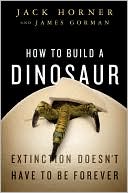Molecular Evolution: A Phylogenetic Approach
The study of evolution at the molecular level has given the subject of evolutionary biology a new significance. Phylogenetic 'trees' of gene sequences are a powerful tool for recovering evolutionary relationships among species, and can be used to answer a broad range of evolutionary and ecological questions. They are also beginning to permeate the medical sciences. In this book, the authors approach the study of molecular evolution with the phylogenetic tree as a central metaphor. This will...
Search in google:
The study of evolution at the molecular level has given evolutionary biology a new impetus. Phylogenetic 'trees' of gene sequences are a powerful tool for recovering evolutionary relationships among species, and can be used to answer a broad range of evolutionary and ecological questions. They are also beginning to permeate the medical sciences. In this book, the authors approach the study of molecular evolution with the phylogenetic tree as a central metaphor. This will equip students and professionals with the ability to see both the evolutionary relevance of molecular data, and the significance evolutionary theory has for molecular studies. The book is accessible, yet sufficiently detailed and explicit that the student can learn the mechanics of the procedures discussed.Intended for senior undergraduate and graduate students taking courses in molecular evolution/phylogenetic reconstruction, it will also be a useful supplement for students taking wider courses in evolution, as well as a valuable resource for professionals. Michael Cummings Genome projects are generating nucleotide sequence data for organisms across the phylogenetic scale. This book is a presentation of the analysis of this information and its use in reconstructing evolutionary relationships among organisms. The purpose is to explain the evolution of genes and genomes by analysis of gene sequence data and the construction of phylogenetic trees. This book is written by two experts in the field who have provided a contemporary and needed introduction to molecular evolution that will serve as a guidebook to those seeking to make sense of the avalanche of nucleotide sequence data now being generated. It is intended for use by advanced undergraduate and beginning graduate students in a course in molecular evolution. Because of the accessible writing style and organization, it will also be useful to professionals who wish to understand molecular evolution as it applies to their own specialty or for personal reading. After an introductory conspectus in Chapter 1, the authors begin by laying out a clear introduction to the concept of phylogenetic trees, how they are constructed and used in reconstructing the history of traits, in organismal phylogeny, and in the construction of networks. In subsequent chapters basic genetic themes such as gene structure, expression, mutation, recombination, and population genetics with phylogenetic analysis are interwoven. With these topics clearly established as a foundation, in the last two chapters the authors tackle the more difficult problems of using phylogenetic analysis in dissecting neutralist and selectionist models of evolution and the use of phylogenetic trees in specific applications, including gene history,host-parasite co-speciation, and molecular epidemiology. The value of this book lies in the authors' two-fold approach. They begin with a clear exposition of what phylogenetic trees are and how they are constructed. After this, basic genetic concepts are reviewed, and integrated into the analysis of genes and genomes using phylogenetic trees. The examples chosen are up-to-date and will hold the interest of the reader. There are few comparable texts currently available, and this one may serve to generate new courses in molecular evolution at many institutions.
Acknowledgements1The Archaeology of the Genome12Trees113Genes: Organisation, Function and Evolution374Genes in Populations895Measuring Genetic Change1356Inferring Molecular Phylogeny1727Models of Molecular Evolution2288Applications of Molecular Phylogenetics280References and Bibliography315Index335
\ From The CriticsReviewer: Michael Cummings, PhD(University of Illinois at Chicago)\ Description: Genome projects are generating nucleotide sequence data for organisms across the phylogenetic scale. This book is a presentation of the analysis of this information and its use in reconstructing evolutionary relationships among organisms. \ Purpose: The purpose is to explain the evolution of genes and genomes by analysis of gene sequence data and the construction of phylogenetic trees.\ Audience: This book is written by two experts in the field who have provided a contemporary and needed introduction to molecular evolution that will serve as a guidebook to those seeking to make sense of the avalanche of nucleotide sequence data now being generated. It is intended for use by advanced undergraduate and beginning graduate students in a course in molecular evolution. Because of the accessible writing style and organization, it will also be useful to professionals who wish to understand molecular evolution as it applies to their own specialty or for personal reading. \ Features: After an introductory conspectus in Chapter 1, the authors begin by laying out a clear introduction to the concept of phylogenetic trees, how they are constructed and used in reconstructing the history of traits, in organismal phylogeny, and in the construction of networks. In subsequent chapters basic genetic themes such as gene structure, expression, mutation, recombination, and population genetics with phylogenetic analysis are interwoven. With these topics clearly established as a foundation, in the last two chapters the authors tackle the more difficult problems of using phylogenetic analysis in dissecting neutralist and selectionist models of evolution and the use of phylogenetic trees in specific applications, including gene history, host-parasite co-speciation, and molecular epidemiology.\ Assessment: The value of this book lies in the authors' two-fold approach. They begin with a clear exposition of what phylogenetic trees are and how they are constructed. After this, basic genetic concepts are reviewed, and integrated into the analysis of genes and genomes using phylogenetic trees. The examples chosen are up-to-date and will hold the interest of the reader. There are few comparable texts currently available, and this one may serve to generate new courses in molecular evolution at many institutions.\ \ \ \ \ Michael CummingsGenome projects are generating nucleotide sequence data for organisms across the phylogenetic scale. This book is a presentation of the analysis of this information and its use in reconstructing evolutionary relationships among organisms. The purpose is to explain the evolution of genes and genomes by analysis of gene sequence data and the construction of phylogenetic trees. This book is written by two experts in the field who have provided a contemporary and needed introduction to molecular evolution that will serve as a guidebook to those seeking to make sense of the avalanche of nucleotide sequence data now being generated. It is intended for use by advanced undergraduate and beginning graduate students in a course in molecular evolution. Because of the accessible writing style and organization, it will also be useful to professionals who wish to understand molecular evolution as it applies to their own specialty or for personal reading. After an introductory conspectus in Chapter 1, the authors begin by laying out a clear introduction to the concept of phylogenetic trees, how they are constructed and used in reconstructing the history of traits, in organismal phylogeny, and in the construction of networks. In subsequent chapters basic genetic themes such as gene structure, expression, mutation, recombination, and population genetics with phylogenetic analysis are interwoven. With these topics clearly established as a foundation, in the last two chapters the authors tackle the more difficult problems of using phylogenetic analysis in dissecting neutralist and selectionist models of evolution and the use of phylogenetic trees in specific applications, including gene history,host-parasite co-speciation, and molecular epidemiology. The value of this book lies in the authors' two-fold approach. They begin with a clear exposition of what phylogenetic trees are and how they are constructed. After this, basic genetic concepts are reviewed, and integrated into the analysis of genes and genomes using phylogenetic trees. The examples chosen are up-to-date and will hold the interest of the reader. There are few comparable texts currently available, and this one may serve to generate new courses in molecular evolution at many institutions.\ \ \ BooknewsApproaches the study of molecular evolution with the phylogenetic tree as a central metaphor, allowing students and professionals to see both the relevance of molecular data and the significance evolutionary theory has for molecular studies. Contains chapters on the function and evolution of genes, measuring genetic change, inferring molecular phylogeny, models of molecular evolution, and applications of molecular phylogenetics. For advanced students taking courses in molecular evolution/phylogenetic reconstruction. Annotation c. by Book News, Inc., Portland, Or.\ \ \ \ \ 4 Stars! from Doody\ \








